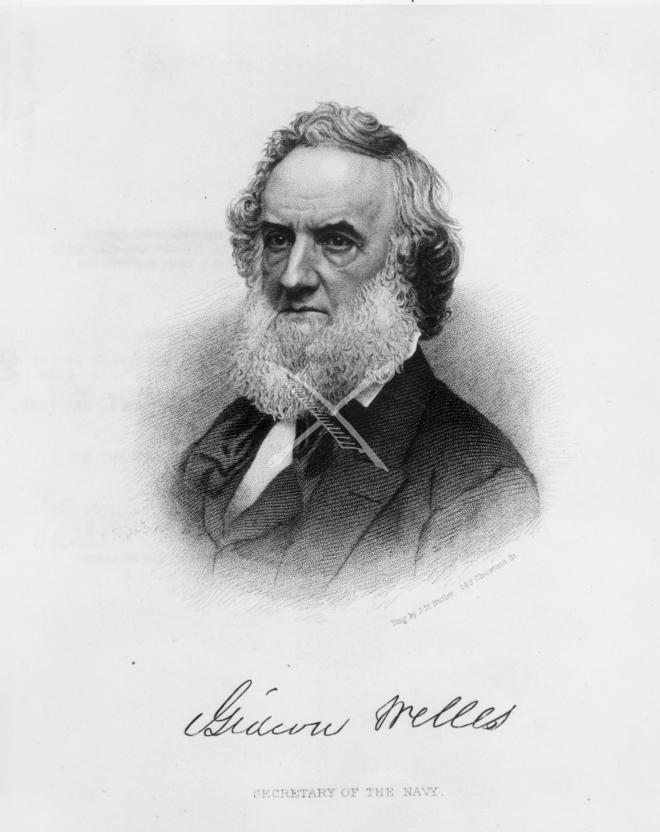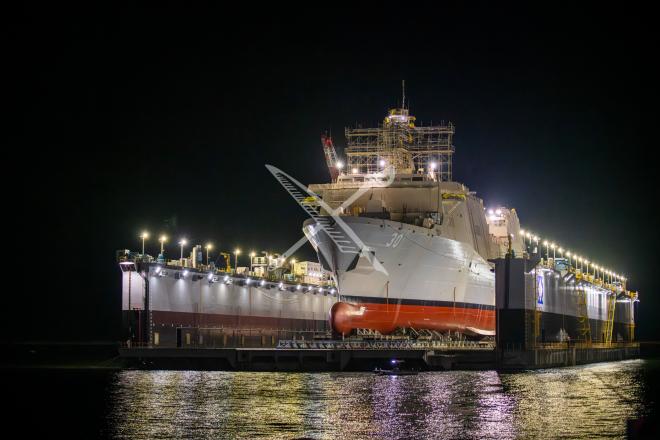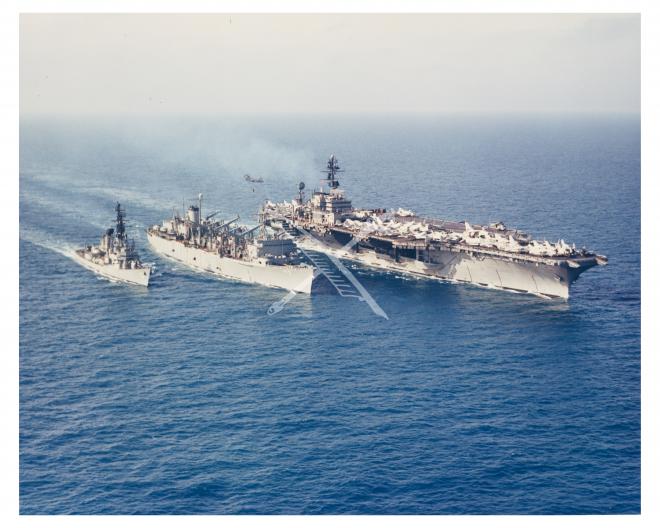
230406-N-XK462-1091 EAST CHINA SEA (April 6, 2023) An F/A-18F Super Hornet from the “Mighty Shrikes” of Strike Fighter Squadron (VFA) 94 launches from the flight deck of the aircraft carrier USS Nimitz (CVN 68). Nimitz is in U.S. 7th Fleet conducting routine operations. 7th Fleet is the U.S. Navys largest forward-deployed numbered fleet, and routinely interacts and operates with allies and partners in preserving a free and open Indo-Pacific region. (U.S. Navy photo by Mass Communication Specialist 3rd Class Hannah Kantner)
Categories:
People

Honorable Gideon Welles, Secretary of the Navy from 1861-1869. Prior to serving as Secretary of the Navy, Gideon Welles was a prominent journalist.
Categories:
People

Scene aboard the signal bridge of the USS Minneapolis (CA-36) of sailors enjoying their morning coffee.
Categories:
People

President John F. Kennedy addressed the U.S. Naval Academy class of 1967 from the steps of Bancroft Hall on August 1, 1963.
Categories:
People

Captain Joseph K. Taussig Jr., USN, photographed as a midshipman at the U.S. Naval Academy.
Categories:
People

Petty Officer 2nd Class Cory Sumner, a San Francisco Maritime Enforcement Specialist, directs Blasjo, an explosive detection K-9, during a search of AT&T Park Thursday, March 27, 2014. The goal of the exercise is to get the explosive detection K-9s, like Blasjo, prepared to do sweeps in preparation of the baseball season. U.S. Coast Guard photo by Petty Officer 3rd Class Adam Stanton
Categories:
People

140412-N-PM781-001
BATH, Maine (April 12, 2014) Secretary of the Navy (SECNAV) Ray Mabus speaks with media before the christening ceremony for the Zumwalt-class guided-missile destroyer (DDG) 1000. The ship, the first of three Zumwalt-class destroyers, will provide independent forward presence and deterrence, support special operations forces and operate as part of joint and combined expeditionary forces. The lead ship and class are named in honor of former Chief of Naval Operations Adm. Elmo R. Bud Zumwalt Jr., who served as chief of naval operations from 1970-1974. (U.S. Navy photo by Mass Communication Specialist 1st Class Arif Patani/Released)
Categories:
People

USS Wasp (LHD-1) conducts a replenishment at sea with the USNS John Lenthall (T-AO-189) and USS Porter (DDG-78).
Categories:
Ships and Submarines

USS Gerald R. Ford (CVN-78) underway in the Atlantic, November 2024.
Categories:
Ships and Submarines

USS Harrisburg (LPD-30) sits on Ingalls Shipbuilding dry dock in October 2024.
Categories:
Ships and Submarines

The SS Andrea Doria sinking into the Atlantic following a collision with another vessel in July 1956.
Categories:
Ships and Submarines

USS Constellation (CV-64) and USS Hoel (DDG-13) replenish from the USS Camden (AOE-2) while operating in the Tonkin Gulf during Vietnam.
Categories:
Ships and Submarines

USS Camden (AOE-2) replenishes the USS Constellation (CV-64) and USS Hoel (DDG-13) in the Gulf of Tonkin.
Categories:
Ships and Submarines


